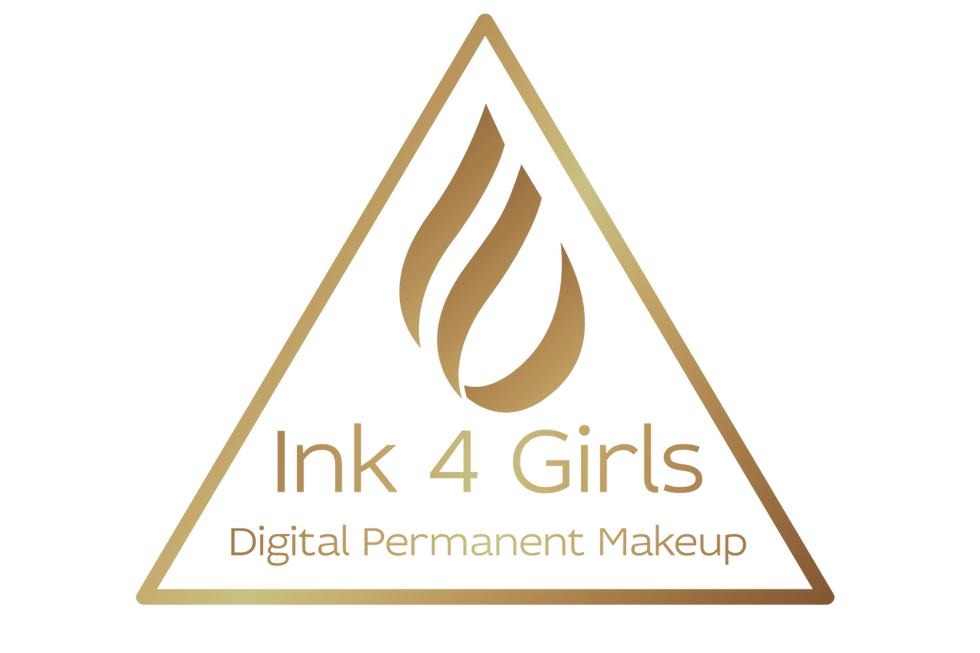Ink4Girls PERMANENT MAKEUP
because only the best will do
"Oversaturation" in Permanent Makeup: What It Really Means
Have you ever gone to a permanent makeup artist for a touch-up, only to be told they can’t work on your brows because you’re oversaturated? Maybe you were hoping for soft hairstrokes or a fresh new brow design, but instead, you were told you need removal first.
The word “oversaturated” has become the new dirty word in permanent makeup. But what does it actually mean — and do you always need removal when you hear it?
Let’s break it down.
What “Oversaturated” Really Means
When a permanent makeup artist says your brows are oversaturated, it means there’s too much pigment built up in your skin. This often happens over time — especially if you’ve had multiple touch-ups or reapplications done by different artists over many years.
Too much pigment leaves no room for new color or definition, which makes hairstrokes or detailed designs impossible to see. You need lighter skin in between those hairstrokes for them to be visible. If the entire brow area is dark, no matter what the artist does, the result will look blurry or muddy — not crisp and hair-like.
When Removal Is Needed
If your brows are very dark, dense, or the shape is off, removal (also called lifting) is often the best solution.
This process lightens the pigment so there’s room for a new, clean application.
Removal treatments are usually spaced 4 to 8 weeks apart, and depending on your pigment depth and skin, you may only need 2–3 sessions to lift enough color for a successful new set of brows.
If your artist doesn’t offer removal, they may refer you to another specialist or a laser clinic.
When You Don’t Need Removal
Not every oversaturated brow requires removal. Sometimes, a color correction is all that’s needed.
For example, if your brows look ashy, gray, or cool-toned, adding the right mix of warm pigments (reds, oranges, or golds) can bring them back to a soft, natural brown.
However, if you want to go lighter or dramatically change your shape, correction alone won’t be enough — lifting is the safer option.
Why Camouflage Doesn’t Work
One of the worst mistakes in permanent makeup is trying to cover dark, oversaturated brows with skin-tone or white pigments (often titanium dioxide).
This technique creates a thick, chalky, or clumpy appearance that heals grayish and unnatural. It might look fine at first, but as it settles, it becomes patchy and uneven — often worse than before.
Camouflage should only be used in very small areas by experienced artists, and only when the pigment underneath is already light. It’s not meant for full-brow correction or heavy saturation.
How Oversaturation Happens
You might think oversaturation only occurs after years of touch-ups — but that’s not always true.
Modern tattoo machines are more powerful than ever. Some have longer stroke lengths or stronger hit force, which can pack too much pigment into the delicate facial skin in just one session.
If a technician uses equipment designed for body tattoos — or works too heavily, with too many passes — it can easily lead to oversaturation or even skin trauma.
Pigment Types Matter
The type of pigment in your skin plays a big role in how your brows age and whether they become oversaturated.
There are three main types:
-
Iron Oxide Pigments
-
Softer, more natural
-
Fade faster (usually every 1–2 years)
-
Tend to fade warm (reddish or pinkish tones)
-
Easier to refresh or correct
-
-
Carbon-Based Pigments
-
Very strong and long-lasting
-
Heal cool (bluish, gray, or ashy)
-
Harder to remove or fade naturally
-
Can easily cause oversaturation if used repeatedly
-
-
Hybrid Pigments
-
A mix of iron oxide and carbon
-
Last longer than pure iron oxide
-
Eventually fade cool as the warm tones disappear, leaving behind carbon
-
Once your brows contain too much carbon pigment, it becomes difficult to achieve warmer, softer tones — no matter how much new color you add. In that case, switching to iron oxide-only pigments or doing a lifting treatment to pull out some of the carbon is the smarter route.
So… Are You Really Oversaturated?
If you’ve only had your brows done once or twice and an artist says you’re oversaturated, it might not mean what you think.
You could simply have pigment buildup, carbon-heavy tones, or be working with a technician who prefers starting on a clean slate. It doesn’t necessarily mean you’re “too dark” — it might mean the pigment type or undertone in your skin isn’t suitable for your desired look.
The Bottom Line
Oversaturation isn’t a life sentence — it’s just your skin’s way of saying it’s time to lighten things up.
The best approach depends on your goals:
-
Want hairstrokes or microblading? You’ll need light, even skin between strokes — removal may be required.
-
Want softer, warmer brows? A skilled artist can often correct them with color theory and the right pigments.
-
Want a completely new shape? Lifting or partial removal is the safest and cleanest option.
The key is finding an artist who understands pigment chemistry, skin behavior, and proper correction techniques.
Permanent Makeup Client Education: Everything you should know about your permanent makeup artist.
